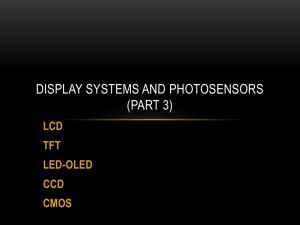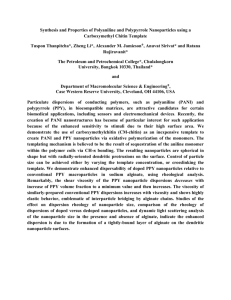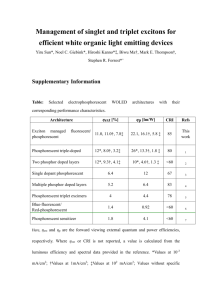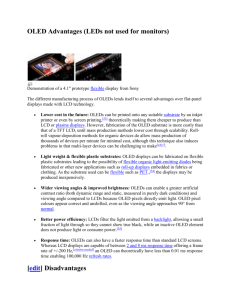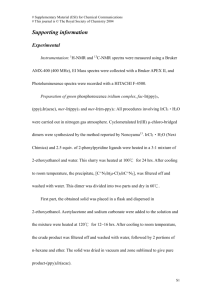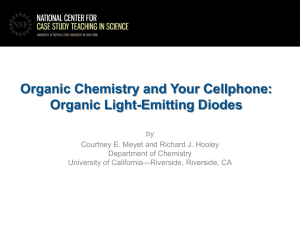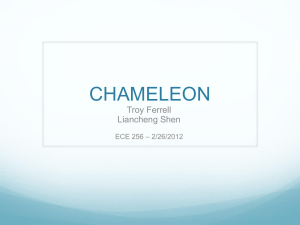3 doped in various fluorescent organic materials
advertisement
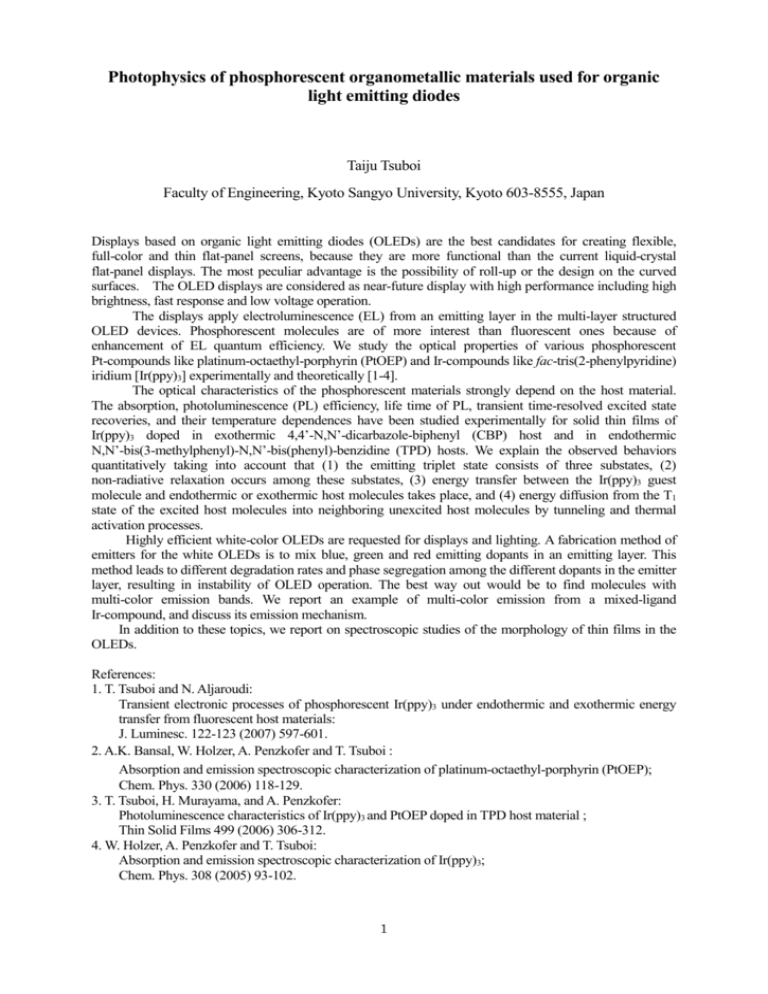
Photophysics of phosphorescent organometallic materials used for organic light emitting diodes Taiju Tsuboi Faculty of Engineering, Kyoto Sangyo University, Kyoto 603-8555, Japan Displays based on organic light emitting diodes (OLEDs) are the best candidates for creating flexible, full-color and thin flat-panel screens, because they are more functional than the current liquid-crystal flat-panel displays. The most peculiar advantage is the possibility of roll-up or the design on the curved surfaces. The OLED displays are considered as near-future display with high performance including high brightness, fast response and low voltage operation. The displays apply electroluminescence (EL) from an emitting layer in the multi-layer structured OLED devices. Phosphorescent molecules are of more interest than fluorescent ones because of enhancement of EL quantum efficiency. We study the optical properties of various phosphorescent Pt-compounds like platinum-octaethyl-porphyrin (PtOEP) and Ir-compounds like fac-tris(2-phenylpyridine) iridium [Ir(ppy)3] experimentally and theoretically [1-4]. The optical characteristics of the phosphorescent materials strongly depend on the host material. The absorption, photoluminescence (PL) efficiency, life time of PL, transient time-resolved excited state recoveries, and their temperature dependences have been studied experimentally for solid thin films of Ir(ppy)3 doped in exothermic 4,4’-N,N’-dicarbazole-biphenyl (CBP) host and in endothermic N,N’-bis(3-methylphenyl)-N,N’-bis(phenyl)-benzidine (TPD) hosts. We explain the observed behaviors quantitatively taking into account that (1) the emitting triplet state consists of three substates, (2) non-radiative relaxation occurs among these substates, (3) energy transfer between the Ir(ppy)3 guest molecule and endothermic or exothermic host molecules takes place, and (4) energy diffusion from the T1 state of the excited host molecules into neighboring unexcited host molecules by tunneling and thermal activation processes. Highly efficient white-color OLEDs are requested for displays and lighting. A fabrication method of emitters for the white OLEDs is to mix blue, green and red emitting dopants in an emitting layer. This method leads to different degradation rates and phase segregation among the different dopants in the emitter layer, resulting in instability of OLED operation. The best way out would be to find molecules with multi-color emission bands. We report an example of multi-color emission from a mixed-ligand Ir-compound, and discuss its emission mechanism. In addition to these topics, we report on spectroscopic studies of the morphology of thin films in the OLEDs. References: 1. T. Tsuboi and N. Aljaroudi: Transient electronic processes of phosphorescent Ir(ppy)3 under endothermic and exothermic energy transfer from fluorescent host materials: J. Luminesc. 122-123 (2007) 597-601. 2. A.K. Bansal, W. Holzer, A. Penzkofer and T. Tsuboi : Absorption and emission spectroscopic characterization of platinum-octaethyl-porphyrin (PtOEP); Chem. Phys. 330 (2006) 118-129. 3. T. Tsuboi, H. Murayama, and A. Penzkofer: Photoluminescence characteristics of Ir(ppy)3 and PtOEP doped in TPD host material ; Thin Solid Films 499 (2006) 306-312. 4. W. Holzer, A. Penzkofer and T. Tsuboi: Absorption and emission spectroscopic characterization of Ir(ppy)3; Chem. Phys. 308 (2005) 93-102. 1
